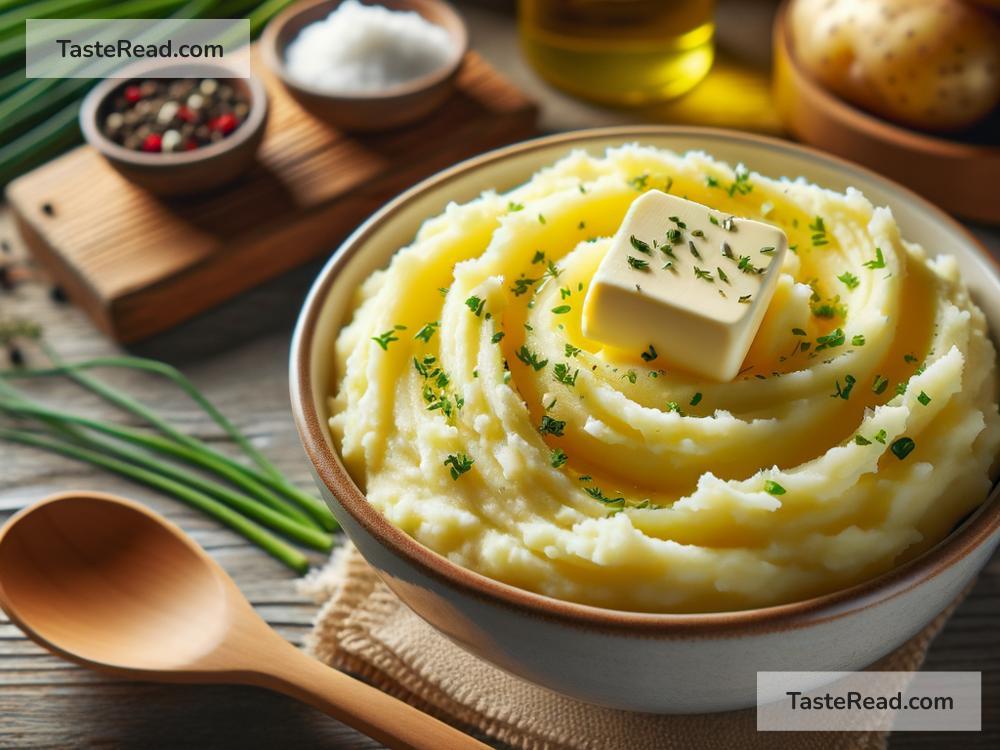The Truth Behind Mashed Potato Perfection
Mashed potatoes are one of the simplest yet most beloved comfort foods around the world. Soft, creamy, and full of flavor, they’re the perfect side dish to complement a hearty meal. But achieving mashed potato perfection isn’t so simple. You might think it’s just boiling potatoes and mashing them, but there’s more to it than meets the eye. In this blog, we’re diving into the truth behind what makes mashed potatoes truly great and breaking it down step by step in simple English.
It Starts With the Right Potato
Not all potatoes are created equal, and not every potato works for mashed potatoes. The type of potato you choose significantly impacts the texture and flavor of your mash. There are two main potato categories to understand:
- Starchy potatoes (like Russets): These are light and fluffy when cooked, making them ideal for creamy mashed potatoes.
- Waxy potatoes (like Yukon Golds): These are denser and creamier, giving your mash a smooth texture.
Some people prefer Yukon Golds for their rich, buttery flavor, while others love Russets for their fluffiness. Whichever you choose, using fresh, high-quality potatoes is key to achieving tasty mashed potato perfection.
Cooking Is King: Boil Them Right
Here’s where many people go wrong: boiling the potatoes. If you don’t cook them evenly, your mashed potatoes might end up lumpy or watery. Follow these tips for boiling success:
- Cut potatoes into uniform chunks: This ensures all the pieces cook evenly. If some chunks are much larger than others, the smaller ones might overcook, while the big ones stay undercooked.
- Start with cold water: Add the potatoes to the pot before turning on the heat. Starting with cold water allows the potatoes to cook at the same rate, rather than unevenly.
- Salt the water: Don’t skip this step—it adds flavor. Think of it as seasoning the potatoes from the inside out.
Cook the potatoes until they are fork-tender, meaning they’re soft enough to be pierced easily but not falling apart.
Don’t Skip Drying the Potatoes
Here’s a secret many people don’t know: drying the potatoes after boiling helps avoid watery mashed potatoes. Once you’ve drained them, place the cooked potatoes back into the pot over low heat for a minute or two and stir gently. This removes excess moisture, ensuring a fluffier mash.
Getting the Mash Just Right
There’s no single ‘correct’ way to mash potatoes—it depends on the tools you use and your preference for texture. Here are the most common options:
- Use a potato masher: Classic and straightforward, this tool gives you beautifully rustic mashed potatoes with some small lumps for texture.
- Upgrade to a potato ricer: A ricer pushes the potatoes through small holes, creating an ultra-smooth, restaurant-quality puree.
- Stick blender or food processor: Be careful with these—they can overwork the potatoes and turn them into a gluey paste. Less is more with processed mashing.
Whatever tool you use, mash the potatoes while they’re still warm. Cold potatoes can become gummy, and that’s not what anyone wants!
The Magic Ingredients: Butter and Cream
The secret to irresistible mashed potatoes comes down to two magical ingredients: butter and cream (or milk). But don’t just toss them in without thinking. Here’s how to get the most flavor:
- Use room-temperature butter: Cold butter takes longer to blend into the potatoes, while soft butter melts easily.
- Warm your cream or milk: Warming it before adding ensures everything blends smoothly and keeps the potatoes hot.
The amount you use depends on your taste. Some people love rich and decadent mashed potatoes with lots of butter and cream, while others prefer a lighter version. Start small and add more as needed, tasting as you go.
Seasoning for Success
Potatoes are like a blank canvas—they need seasoning to shine. Salt is essential, but don’t stop there. Here are a few ways to level up your mashed potato seasoning:
- Pepper: Classic choice, but freshly ground black pepper adds depth.
- Garlic: Mince fresh garlic or mix in roasted garlic for a sweet, earthy flavor.
- Cheese: Try Parmesan, cheddar, or cream cheese for extra richness.
- Herbs: Parsley, chives, or rosemary add a fresh, fragrant touch.
- Spices: Experiment with smoked paprika or nutmeg for subtle surprises.
Taste as you go—this is your chance to personalize the flavor and take your mash to the next level.
Keep Texture in Mind
Perfection is subjective when it comes to mashed potatoes. Some people love them smooth and velvety, while others enjoy a few lumps for homemade authenticity. The choice is yours! If your mash feels too thick, add a bit more warm milk or cream. Too thin? Stir in extra mashed potato or butter.
Serving and Storing
Mashed potatoes are best served hot and fresh, but you can keep them warm by placing them in a covered dish over a bowl of steaming water. If you have leftovers, store them in an airtight container in the fridge and reheat gently. Adding a splash of milk or cream while reheating helps bring them back to life.
Final Thoughts
Mashed potato perfection isn’t just about following a recipe—it’s about understanding the process and techniques that deliver the best results. From choosing the right potato to adding the right amount of butter and cream, every step makes a difference. With a little love and attention, you can transform this simple dish into something truly spectacular.
So next time you whip up mashed potatoes, remember: it’s not just food; it’s comfort, creativity, and a little bit of magic on your plate.


